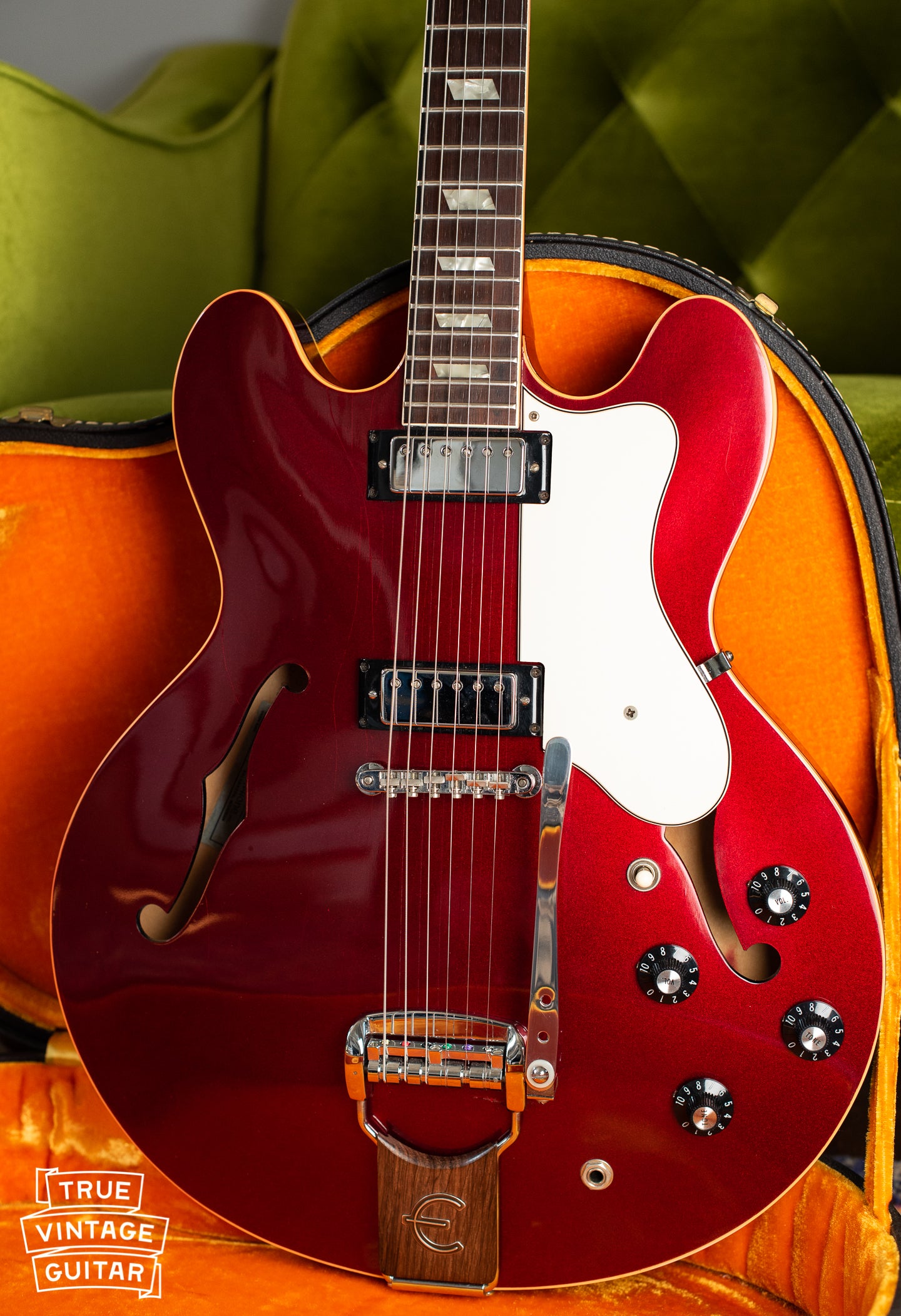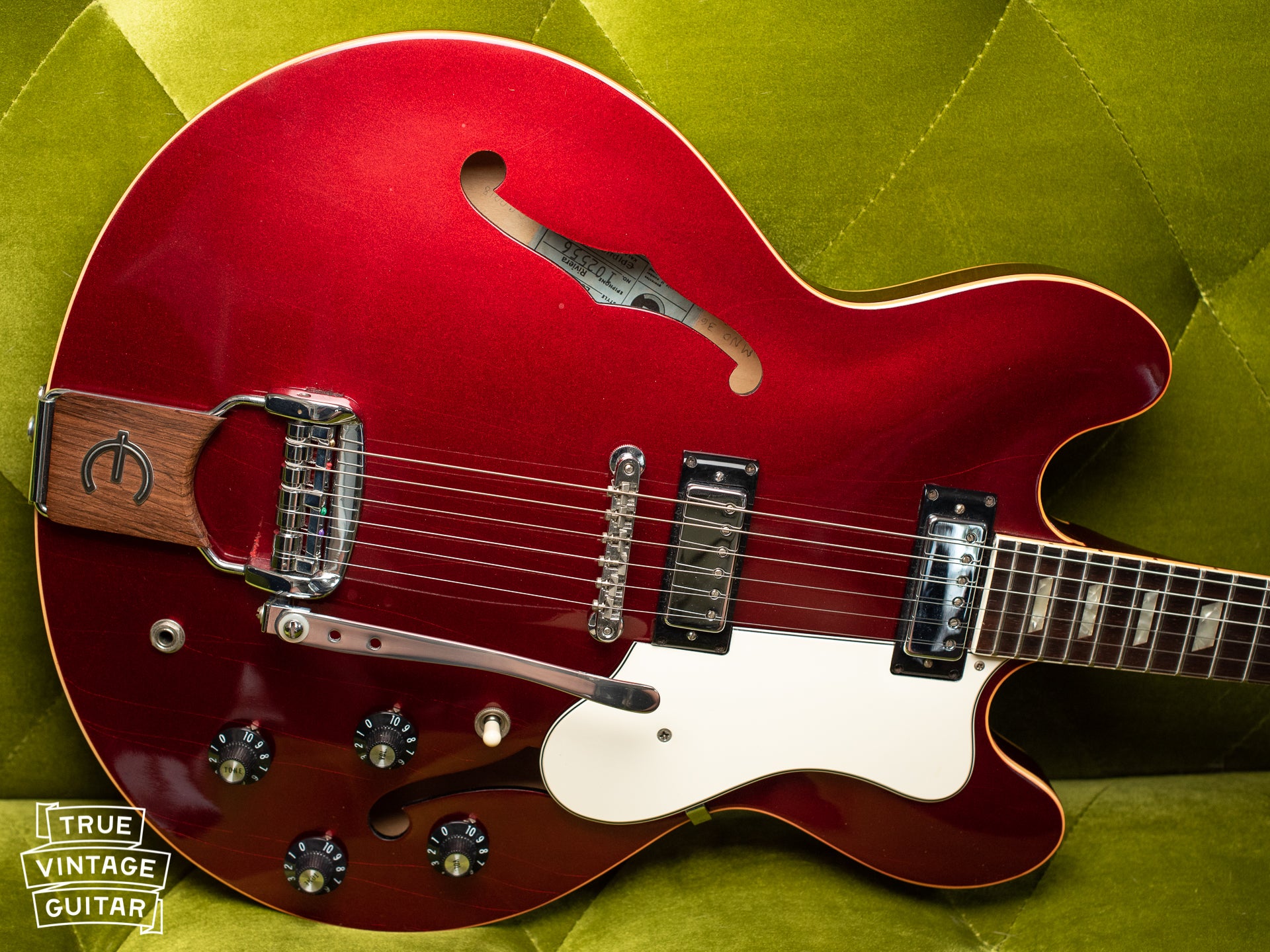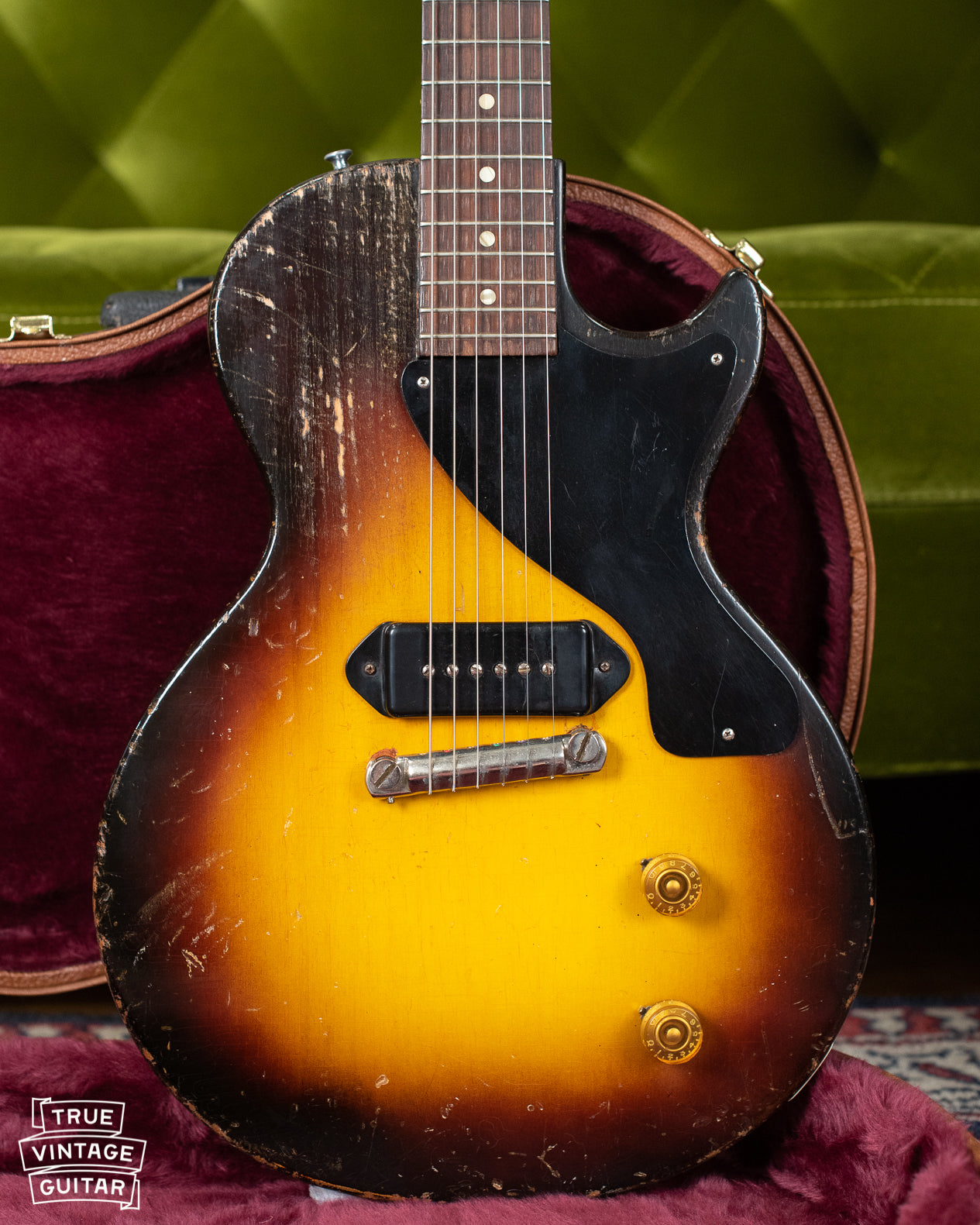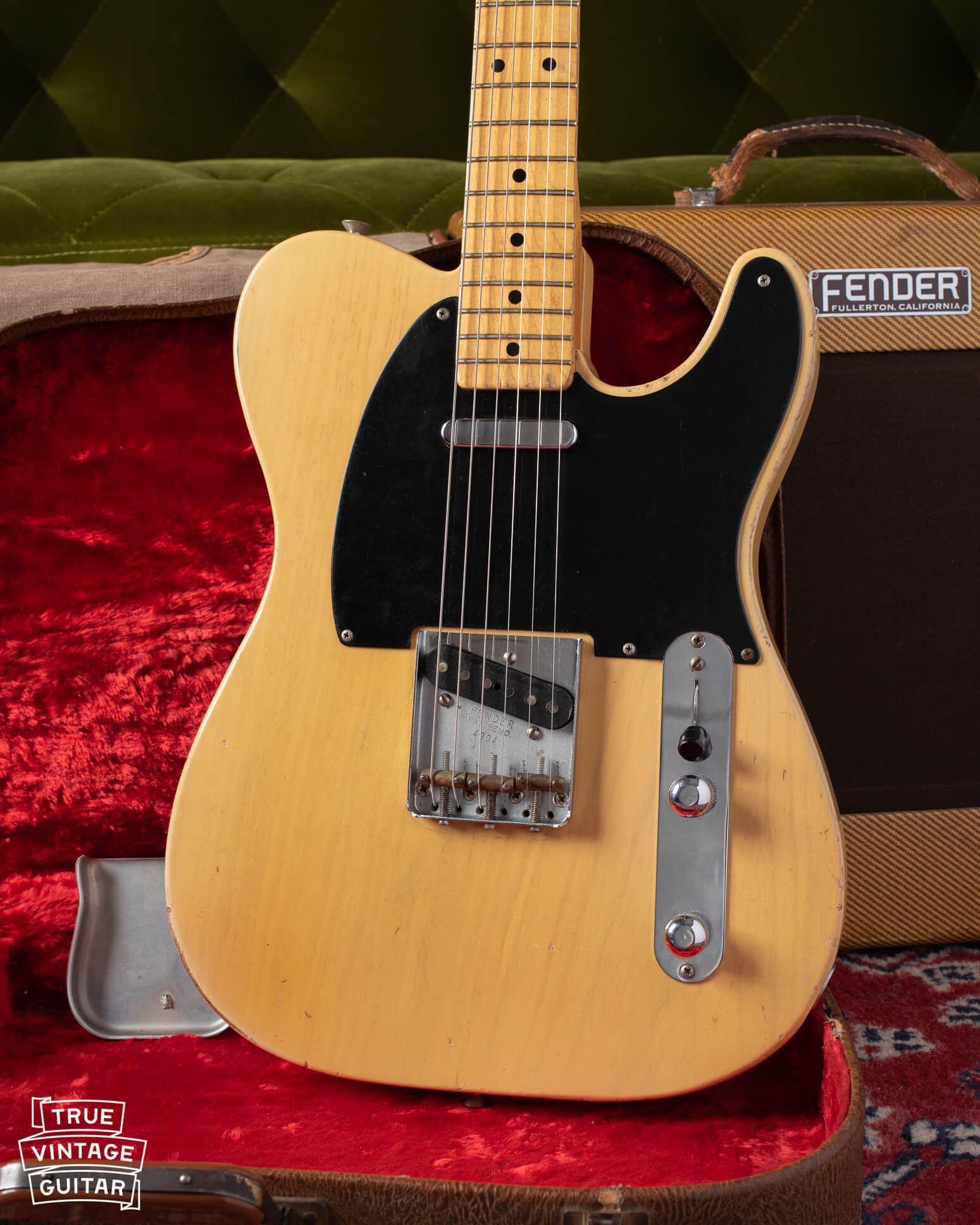1960s Epiphones are some of my favorite vintage guitars because they kind of break the “collectible vintage guitar” rules for pricing. Their quality is every bit as high as Gibson (and made in the same factory?!), the aesthetic is the coolest, there are far fewer of them than the Gibson made counterparts, and yet: they’re often more affordable.
Epiphone history: Epiphone was a one family owned American company manufacturing instruments in New York from the early 1900s until 1957. Epiphone was one of Gibson’s fiercest competitors especially in the archtop jazz guitar arena. The company didn’t experience prosperity in the 1950s like Gibson did and by October of 1957 it was being sold to Gibson for only $20,000. Many half finished parts were shipped to Gibson and some of the guitars were half manufactured in New York and half in Kalamazoo until the parts were used up by about 1960. From that point on, all Epiphone branded guitars were made in Kalamazoo, Michigan on the same line as the Gibson branded guitars. Many of the models had Gibson model counterparts. Some Epiphone models predated the Gibson model like the Epiphone Frontier in 1958 and its Gibson counterpart: the Dove in 1962. The Riviera model came out in 1961, only a few years after its Gibson counterpart: the ES-335 in 1958.
The Riviera and ES-335 are nearly identical throughout except for 3 key places: the pickups, the tailpiece, and the headstock shape. The aesthetic of the mini humbucking pickup likely derived from the New York made single coil pickup which was roughly the same size. They’re great sounding high output pickups but tend to exhibit more high end frequencies than a full size humbucker. Leftover stock of Mini Humbucking pickups were used in the Les Paul Deluxe after its introduction in 1970. Check out the video on this Les Paul Deluxe with mini humbucking pickups if you’d like to see one. The pickups installed in Kalamazoo made Epiphone models with mini humbuckers were usually (always?) installed with both pole piece coils on the neck side instead of opposite like the Gibson guitars.
The tailpiece: Gibson’s ES-335 utilized a stop bar tailpiece with top mounted studs from 1958 until 1965 but the Riviera model came with the Frequensator tailpiece. The Epiphone Tremotone vibrola tailpiece was offered in ‘67. The fulcrum of the vibrola is compensated to maximize tuning stability.
The headstock: The tall Epiphone headstock is different in shape only but it’s very cool looking. One of my favorites.
What makes this example special: Sparkling Burgundy finish. Came out in the early 1960s as a custom color, eventually became a catalog option although is still a more rare finish than the typical Sunburst.
Book recommendation: The Epiphone Guitar Book by Walter Carter (https://amzn.to/2MbbdwC). Has great history about pre-Gibson Epiphone origins, the buyout era, and an extensive portion about the post-Kalamazoo budget brand that has still made some very cool guitars like the scroll models. Even current Epiphone guitars are great quality for the price. The Epiphone Riviera P93 has looks that kill although I haven’t played one yet.








Comments
I bought a Kalamazoo built Riviera when I was 15 in 1967 from my guitar teacher John Lowry at Smiley Brothers in Birmingham Michigan.
I was so lucky to have John as a teacher as he set knew the secret in the Riviera is the neck. It’s slightly smaller and perfect for students! At the time, John taught me how to set it up with “easy action”, string it with 08’s and drop the low E and move the A string to the low E position and, add a thin banjo string on the high E position. Really helps while building up your finger tips. Drop the bridge as low as you can without buzzing. The Riviera list price was actually $15 more than the 335’s around $650 in 1967 dollars. I speculate the parts were lower volume runs possibly making it more expensive.
The mini pickups are fine with a decent amp. I’ve run it through Marshal JCM 100’s and Orange Rockerverbs and it gets the job done.
54 years later this guitar has maintained the quality of the Gibson craftsmen, its still perfect. No neck problems, no fret problems, no electronics problems. Trust me, you’ll never find anything like this made in China!